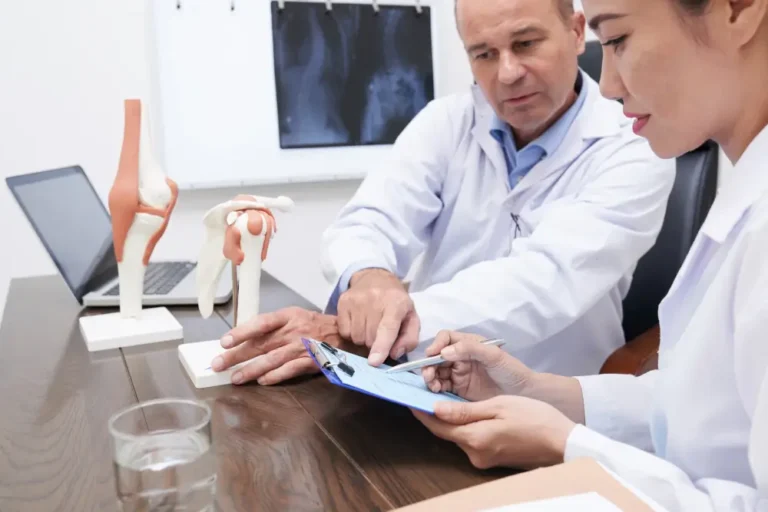With the passage of time, there has been some significant advancements in the field of medical science. Surgeries have become more much easier and less complicated too. You must have heard about minimally invasive surgery. It has been quite successful all across the world of medical science.
What does minimally invasive surgery mean?

Minimally Invasive Surgery is a kind of procedure that allows the surgeon to use some techniques to reduce the number of cuts and sizes, or incisions during the surgery that they have to make. It is considered to be quite safer than a typical open surgery. This procedure also helps you to recover in less time, staying in hospital is also reduced and also you will feel more relaxed and comfortable during your healing period.
In the past decade, minimally invasive surgery has led to the growth of surgical medicine. This important development has not only become the successor of the more traditional procedures but has also led the surgeons to reconsider the traditional methods. However, with every new invention there are drawbacks and benefits and so read this post to know more about it.
In traditional open-cut surgery, the surgeon has to cut a large part to see the body part that they have to operate on. However, in minimally invasive surgery, small tools and cameras with lights are used for the procedure. This procedure helps the surgeon to allow surgery without opening a lot of muscles and skin.
Nowadays, some minimally invasive surgeries are performed with robotic technology as well. This helps to perform the surgery with more precise control. Other minimally invasive surgeries are also performed without robotic assistance.
How is minimally invasive surgery performed?
Minimally invasive surgery or surgery which is robotic-assisted is usually done with the help of an electronic operating station which is quite the same as a computer. The surgeon operates the cameras and robotic arms from sitting inside the station to perform the operation.
To operate with the help of robotic assistance, the surgeon has to follow the following steps:
- They would use anaesthesia to help you stay asleep during the surgery.
- Tools that will be used by the robots, will also have to be set up.
- The doctor has to make several cuts on your skin to insert the tools.
- From the cuts on your skin the doctor has to insert the tools along with the robotic arms.
- From the other small cuts, the doctor also has to insert a narrow tube with a camera and light attached to it, this process is called an endoscope. This helps the doctor to see clearly the part that the doctor has to operate on.
- By looking at the endoscope images on a screen, the doctor operates accordingly with the robotic arms.
- After the operation, removing all the tools from the cuts is quite an important task.
- The doctor has to stitch all the cuts after the entire procedure.
What are the benefits and risks of minimally invasive surgery?

The main benefits of robotic surgery procedures are as follows:
- You will lose less blood during the surgery, which makes it less dangerous.
- It will cause much less damage to your tissue, skin and muscles.
- This process is also quite less painful and recovery time is also low, therefore you can get discharged from the hospital quite early
- Chance of having an infection is also quite minimal.
- As cuts are small, scars are also quite small and less in number.
Nevertheless, there are a few risks involved too. The main disadvantage is time. It is a much longer procedure than a normal open cut surgery. It is because the doctor has to set up all the equipment for the robot before starting the operation procedure. This also increases the risk of complications related to anaesthesia. It is better to consult with the doctor before the minimally invasive procedure, whether you are fit or not. In some cases, the doctor can advise you for open-cut surgery for the operation to be successful. But this will take more time to heal.
What types of surgery are minimally invasive?
If we go into the details, we would come across multiple types of minimally invasive procedure. Some of them are:
- Advanced laparoscopic surgery: In this process, one or multiple small incisions are made in the abdomen.
- Video-Assisted Thoracoscopic Surgery (VATS): This process involves treating conditions in the chest area.
- Hysteroscopic Surgery: In this one, an instrument called ‘Hysteroscope’ is inserted into the uterus, via the cervix.
How Does a Non-Robotic Surgery Procedure Work?
The non-robotic procedure of surgery is quite similar to robotic procedure but the main difference is that here the doctor will operate with his/her own hand rather than robotic hands. General anaesthesia will be used to make you stay under sleep throughout the procedure. There will be several cuts on your skin to insert the tools.
Non-Robotic Surgery: Its Benefits and Risks
The benefits
The benefits are quite similar to the robotic procedure. Here in this procedure, the doctor can see much more clearly and is also easy to operate on. You also recover in a short period of time. The chances of having infection and complications are also quite low. This process is also quite cost-effective as well.
The risks
With robotic surgery, infections and the risk of anaesthesia around the surgery area are quite possible. Consult a doctor before doing a non-robotic minimally invasive surgery to see whether you are fit enough or not.
Conclusion
Consulting a doctor before undergoing surgery is very important. You need to ask yourself a few questions, such as- is surgery a better option than taking antibiotics and medications? Will this procedure be a better option than traditional open-cut surgery? And for how long do I have to spend for full recovery? How much will be the minimally invasive surgery cost?
Nowadays, minimally invasive surgeries are becoming more common among people than traditional open-cut surgeries. Endoscopic and Robotic technology is becoming quite advanced day by day. By becoming these technologies advance, surgeries are becoming quite easier by the doctors and they can operate in a quite safer way also. Plus, the presence of RCM companies like Synergy HCLS is also making the claiming process easier for the patients & hospitals.


